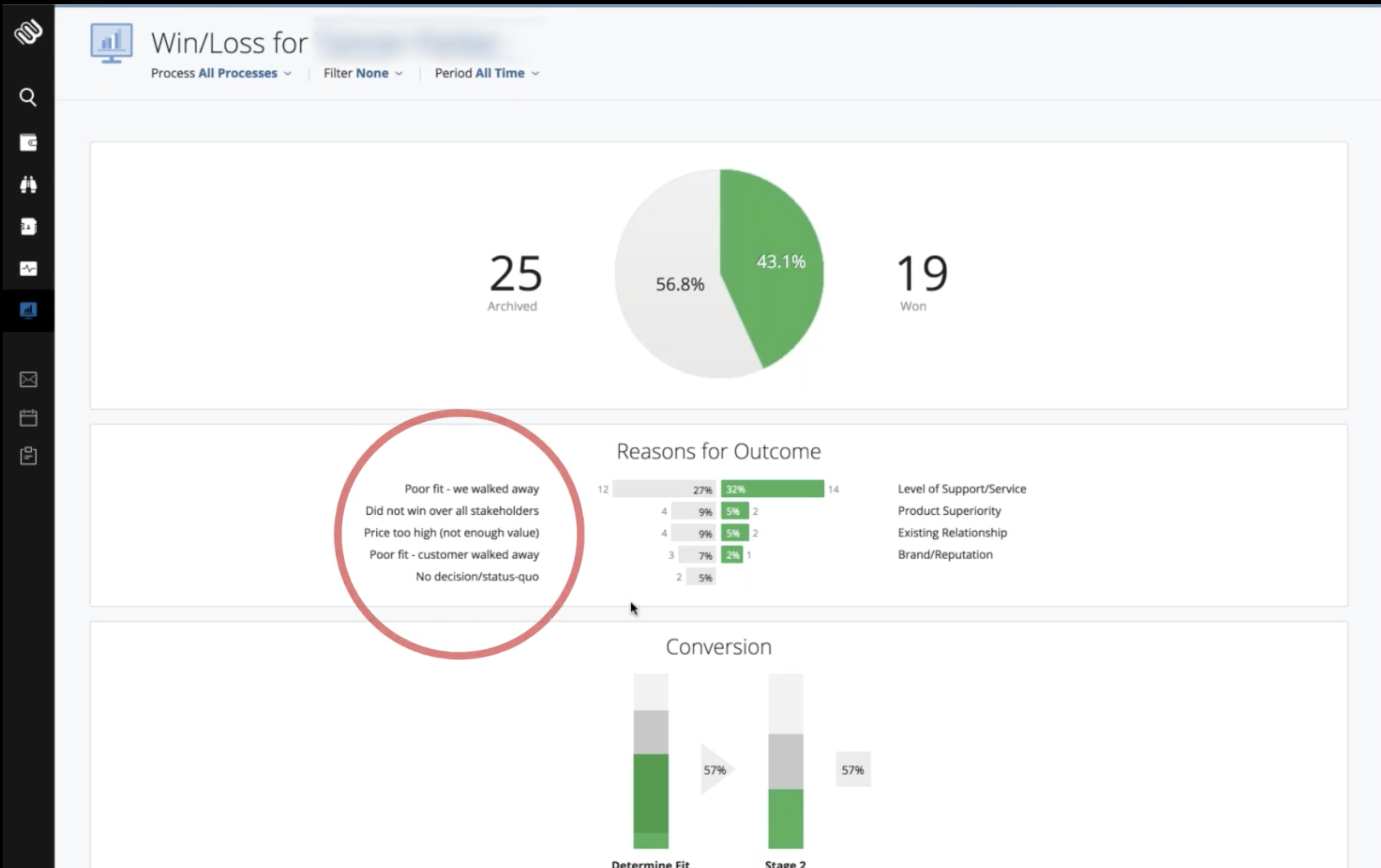
The Dismissive Attitude
Today’s case covers another common issue with a new sales hire’s ability to hit their sales targets in a complex B2B sales environment. A bad attitude can kill deals before they have a chance to get started. The salesperson keeps putting new opportunities into the pipeline, but can’t seem to close them.
While the wrong attitude isn’t always easy to spot from afar, with the right tools we can combine pipeline data with coaching conversations to identify the problem. Once identified, the fix is usually pretty simple.Follow these three steps to identify and correct the “Bad Attitude Case” before your new hire flames out and takes your hiring and training investment out the door with him.
Diagnosis: Bad attitude
Work ethic?
In this case, the salesperson isn’t always meeting his call goals, but he appears to be working hard, and feels frustrated that his hard work isn’t yielding results.
Lack of prospecting?
The salesperson is putting new prospects into the pipeline regularly, so while more prospecting wouldn’t hurt, it’s not the source of the problem.
Skills gap?
The salesperson has the same training as other salespeople and seems to know all the “right” things to do, so we don’t think skills are the biggest issue.
Bad attitude?
When we dig into the data, we discover that 27% of the time, the salesperson marks early losses as “poor fit, we walked away.” Compared to his peers, this is a high number.

A brief coaching conversation reveals that the salesperson frequently writes prospects off as a “poor fit” because he has become personally offended by their behavior. Listening in on a few sales calls, we discover that his demeanor is off-putting, and causing prospects to react defensively, thus creating a negative feedback loop.
Prescription: A softer touch
Now that we understand the problem, we can coach the salesperson and help them discover it as well. I teach coaches to start the coaching conversation with leading questions:
- Why are you meeting so many “poor fit” prospects?
- What makes them a “poor fit”?
- Is there anything you might be doing to cause the problem?
- Is there anything you could do differently to change the way they react?
Of course, as the coach we already know the “right” answers, but it’s helpful for the salesperson to come to the conclusions on their own. We want the salesperson to become aware that he is causing the negative reactions he’s experiencing.
This can be hard for a salesperson to recognize, but once he does, the coach can help him lighten up his pitch and have more fun on sales calls. We may push the issue by eliminating the ability for him to write a prospect off as “poor fit,” and force him to either proceed or find a different reason to disqualify.
Once the salesperson agrees to make these changes, they will usually see immediate improvement in their win rate as more qualified prospects stay in the pipeline for longer.

By Brian Kavicky
Brian Kavicky is Vice President/Owner at Lushin, Inc. He has spent his entire career in sales, sales management and operations management in high growth companies. Working with Presidents, CEO's, Entrepreneurs and their sales teams, Brian helps them strategically achieve sustainable growth through challenging their current beliefs and behaviors. To contact Brian, send him an email.
Find out more about Brian Kavicky on LinkedIn







